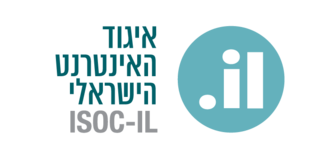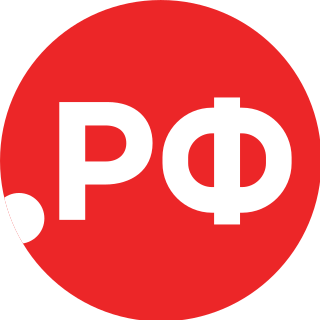The Domain Name System (DNS) is a hierarchical and distributed name service that provides a naming system for computers, services, and other resources on the Internet or other Internet Protocol (IP) networks. It associates various information with domain names assigned to each of the associated entities. Most prominently, it translates readily memorized domain names to the numerical IP addresses needed for locating and identifying computer services and devices with the underlying network protocols. The Domain Name System has been an essential component of the functionality of the Internet since 1985.
A top-level domain (TLD) is one of the domains at the highest level in the hierarchical Domain Name System of the Internet after the root domain. The top-level domain names are installed in the root zone of the name space. For all domains in lower levels, it is the last part of the domain name, that is, the last non-empty label of a fully qualified domain name. For example, in the domain name www.example.com, the top-level domain is .com. Responsibility for management of most top-level domains is delegated to specific organizations by the ICANN, an Internet multi-stakeholder community, which operates the Internet Assigned Numbers Authority (IANA), and is in charge of maintaining the DNS root zone.

In the Internet, a domain name is a string that identifies a realm of administrative autonomy, authority or control. Domain names are often used to identify services provided through the Internet, such as websites, email services and more. Domain names are used in various networking contexts and for application-specific naming and addressing purposes. In general, a domain name identifies a network domain or an Internet Protocol (IP) resource, such as a personal computer used to access the Internet, or a server computer.
A domain name registry is a database of all domain names and the associated registrant information in the top level domains of the Domain Name System (DNS) of the Internet that enables third party entities to request administrative control of a domain name. Most registries operate on the top-level and second-level of the DNS.
The Internet uses the Domain Name System (DNS) to associate numeric computer IP addresses with human-readable names. The top level of the domain name hierarchy, the DNS root, contains the top-level domains that appear as the suffixes of all Internet domain names. The most widely used DNS root is administered by the Internet Corporation for Assigned Names and Numbers (ICANN). In addition, several organizations operate alternative DNS roots, often referred to as alt roots. These alternative domain name systems operate their own root name servers and commonly administer their own specific name spaces consisting of custom top-level domains.

.se, formerly branded as .SE, is the country code top-level domain (ccTLD) for Sweden. It is operated by The Swedish Internet Foundation, but domains must be registered through one of the approved registrars. The Internet Foundation in Sweden is managed on the basis of its charter of foundation and its statutes. The Foundation is managed by a board of directors, whose decisions are executed by the executive management.
A country code top-level domain (ccTLD) is an Internet top-level domain generally used or reserved for a country, sovereign state, or dependent territory identified with a country code. All ASCII ccTLD identifiers are two letters long, and all two-letter top-level domains are ccTLDs.

.af is the Internet country code top-level domain (ccTLD) for Afghanistan. It is administered by AFGNIC, a service of the UNDP. As of 26 August 2020, .af was used by 5960 domains.

.ba is the Internet country code top-level domain (ccTLD) for Bosnia and Herzegovina. It is administered by the University Teleinformation Center.

.il is the Internet country code top-level domain (ccTLD) of Israel, administered by the Israel Internet Association and managed by NIC - ISRAEL, which hosts the DNS root server and manages the Israeli Internet Exchange, that supports IPv4 and IPv6.

.dk is the country code top-level domain (ccTLD) for Denmark. The supervision of the .dk top-level domain is handled exclusively by Punktum dk. Any new .dk domain name has to be applied for via an approved registrar. Then the domain name applicant can ask the registrar to manage their domain name or have it managed directly by the Punktum dk. Registrations of domain names with the characters æ, ø, å, ö, ä, ü, é, and ẞ are also allowed.

.so is the internet country code top-level domain (ccTLD) for Somalia. After a long absence, the .so domain was officially relaunched on November 1, 2010, by .SO Registry, which is regulated by the nation's Ministry of Posts and Telecommunications. It was launched through various accredited registrars around the world.
.mr is the Internet country code top-level domain (ccTLD) for Mauritania.
WHOIS is a query and response protocol that is used for querying databases that store an Internet resource's registered users or assignees. These resources include domain names, IP address blocks and autonomous systems, but it is also used for a wider range of other information. The protocol stores and delivers database content in a human-readable format. The current iteration of the WHOIS protocol was drafted by the Internet Society, and is documented in RFC 3912.
The Domain Name System of the Internet consists of a set of top-level domains that constitute the root domain of the hierarchical name space and database. In the growth of the Internet, it became desirable to expand the initial set of six generic top-level domains in 1984. As a result, new top-level domain names have been proposed for implementation by ICANN. Such proposals included a variety of models ranging from adoption of policies for unrestricted gTLDs that could be registered by anyone for any purpose, to chartered gTLDs for specialized uses by specialized organizations. In October 2000, ICANN published a list of proposals for top-level domain strings it had received.

The domain name .рф is the Cyrillic country code top-level domain for the Russian Federation, in the Domain Name System of the Internet. In the Domain Name System it has the ASCII DNS name xn--p1ai. The domain accepts only Cyrillic subdomain applications, and is the first Cyrillic implementation of the Internationalizing Domain Names in Applications (IDNA) system. The domain became operational on 13 May 2010. As of 2014 it is the most used internationalized country code top-level domain, with around 900,000 domain names.
The Internet in Kazakhstan is growing rapidly. Between 2001 and 2005, the number of Internet users increased from 200,000 to 1 million. By 2007, Kazakhstan reported Internet penetration levels of 8.5 percent, rising to 12.4 percent in 2008 and 34.3% in 2010. By 2013, Kazakhstani officials reported Internet penetration levels of 62.2 percent, with about 10 million users. There are five first-tier ISPs with international Internet connections and approximately 100 second-tier ISPs that are purchasing Internet traffic from the first-tier ISPs. As of 2019, more than 75% of Kazakhstan's population has access to the internet, a figure well ahead of any other country in Central Asia. The Internet consumption in the country rose from 356 PB in 2018 to 1,000 PB in 2022.
.қаз is the Internet internationalized country code top-level domain (iccTLD) for Kazakhstan. It is used with web addresses using Cyrillic letters. It was launched in March 2012, when the first site, a test site ("test.qaz") was activated.

QazCovid-in, commercially known as QazVac, is a COVID-19 vaccine developed by the Research Institute for Biological Safety Problems in Kazakhstan. QazCoVac-P is a second COVID-19 vaccine developed by the Kazakh Biosafety Research Institute and in clinical trials.

COVID-19 vaccination in Kazakhstan is an ongoing immunization campaign against severe acute respiratory syndrome coronavirus 2 (SARS-CoV-2), the virus that causes coronavirus disease 2019 (COVID-19), in response to the ongoing pandemic in the country.










